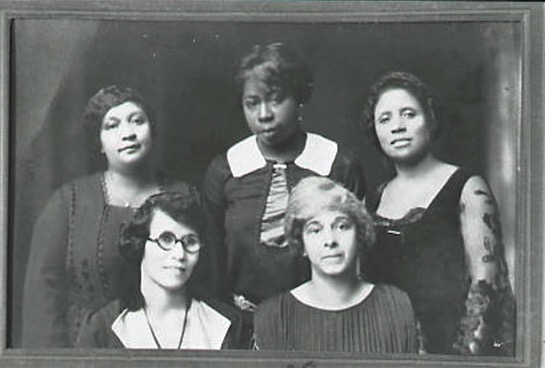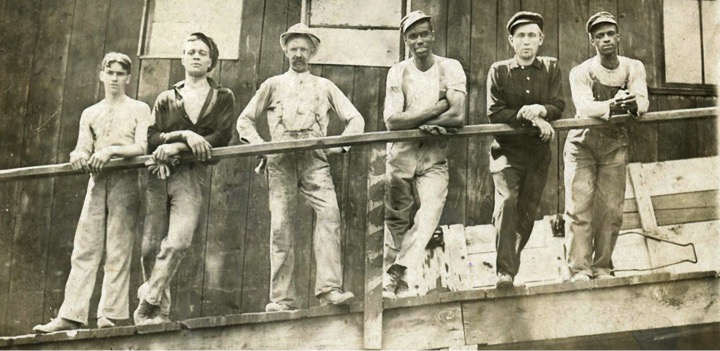By Ric Sheffield, Professor of Legal Studies and Sociology, Kenyon College
Contact at: sheffier@kenyon.edu
“Diversity” is a term that is widely used in the academy despite the fact that it has a variety of definitions and usages, most of which are directly linked to somewhat loosely-framed goals of particular institutions. While the concept still generates heated debate in various arenas in society, America’s liberal arts institutions have made “diversity” a high priority. The majority of the nation’s most select colleges and universities have gone to great lengths to articulate the value of diversity to the liberal arts enterprise.
While prominently expressing its commitment to diversity on the College’s webpages, Kenyon College in Gambier, Ohio states that its “commitment to diversity embraces: people…ideas…experiences…[and] campus environment…” It strikes me that something is missing from this framework, and that is the college’s relationship with and commitment to understanding diversity and fostering its ideals within the greater Knox County community as a whole. Like many of its sister colleges within the Great Lakes Colleges Association, the College is nestled within the rural countryside. (According to the U.S. Census Bureau’s American Community Survey, about two thirds of the GLCA’s thirteen member institutions are located in rural areas.) All of our students and most of the faculty both live and work in this environment.
Although it took some time, Kenyon fortunately has stopped apologizing for its location and has begun to embrace the many virtues of its surrounding communities. It is equally important that we not forget as well that rural whites are significant stakeholders in cultural diversity, even if sometimes they appear reluctant to be. If for no reason other than the demographic projections for America’s racial and ethnic landscape, rural communities are expected to see dramatic growth in minority populations over the next decade and more.
While some suggest that predominantly white rural areas are ill-prepared for the influx of nonwhite residents due to lack of exposure and unfamiliarity with cultural practices of these new neighbors, it may well be that small town “country folks” are in some ways perhaps better positioned to genuinely welcome the new arrivals.
Small towns were often spared the scars of ethnic conflict and competition for jobs and housing due to the relatively small number of newcomers. With less baggage from overt and covert actions to forestall integration with invidious strategies like school segregation, mortgage red-lining, and restrictive residential ordinances as commonly practiced in many of this nation’s urban and suburban communities, small towns and hamlets generally don’t have to work to dismantle the vestiges of these polarizing schemes. The greater challenge faced by rural communities is getting past the distrust of outsiders and fear of the unknown. There will be many debates in the coming years about the impact of increased diversity in the Heartland. These issues present significant scholarly opportunities for Kenyon’s students and faculty.
Regardless of the projections about the changing demographics in places like Knox County, Kenyon has been home to an increasing number of persons from a variety of racial, ethnic, and cultural backgrounds that historically have been underrepresented. The experiences of these students both within the campus community and the Knox County communities at large provide new and important lenses through which to view the impact of expanding rural diversity. In addition to examining the experiences of persons of color and “others” in the larger community during their four years in the area, much can be learned from exploring the fascinating cultural shifts of young persons who may have arrived at Kenyon from “minority-majority” regions of the nation and world as they navigate rural Ohio.

Mt. Vernon’s Colored Women’s Glee Club, c. 1920. Courtesy of “The Community Within,” Knox County (Ohio) Black History Archive
Drawing upon the model of “The Community Within,” an award-winning project conducted as part of the American Studies senior seminar that I co-taught with Emeritus Professor of Sociology Howard Sacks several years ago, I intend to teach another year-long course in American Studies that examines racial and ethnic diversity as a whole in rural Knox County, Ohio. The precursor to Prof. Sack’s Family Farm project and the foundation for the nationally-recognized Kenyon Rural Life Center, our community study of the Black experience in Knox County will serve as a template for this latest endeavor. The highly regarded Latinos in Rural America (LiRA) project directed by Kenyon’s Prof. Clara Roman-Odio was modeled, in part, upon the Community Within, and she and her student researchers attended the Oral History Institute on Kenyon’s campus in 2015. In cooperation with community partners, students will be trained in a variety of fieldwork methods to document immigration patterns, collect cultural artifacts, conduct interviews of local residents, and produce oral histories to explore the various meanings of “difference” among racial and ethnic groups in our rural county. At the conclusion of the course, students will construct a Knox Diversity website, share their work publicly at one or more events around the local area, and sponsor a countywide Knox Diversity Celebration.
A comprehensive project about rural diversity requires both outreach to explore our surroundings and reflection within. Rural diversity comes about in our community perhaps as much a consequence of under-represented students moving onto our campuses and living in Knox county as it does through other modes of migration. So, the College has a significant impact upon our rural environment simply by virtue of its bringing students, faculty, and staff from under-represented backgrounds here. A reciprocal effect requires us to be more attentive to how the rural character of our community can and does affect the experiences of those who join our campus. For example, many colleges establish groups like a Black Student Union to provide support for African American students attempting to navigate their predominantly white campuses. Institutions located in rural America often forget that the greater cultural adjustment may be occurring when these students are trying to negotiate their way within the small town environments in which their colleges are located. Concurrently with the community study, my students and I have begun to construct social histories of the various cultural affinity groups that have been established at Kenyon to begin to tell the stories of these journeys into and through rural America.

Gus Simmons giving son, Lawrence, and other boys a ride on his hay wagon, c. 1930. Courtesy of “The Community Within,” Knox County (Ohio) Black History Archive
One goal of the Diversity in the Heartland project is to expand the public discourse in the field of rural diversity. I have always felt that Kenyon is well situated to make its mark in shaping and contributing to the discourse about rural diversity. I can think of no colleges and universities better positioned to advance our understanding of that concept than those like ours that are located in such communities. Toward that end, I would like to see each of our campuses sponsor a public lecture or series by nationally renowned experts studying rural diversity. I invite my faculty colleagues at GLCA institutions to consider introducing new courses on this topic or incorporate rural diversity literatures into their curricula. I encourage the creation of an undergraduate research fellowship on these campuses with the goal of having the students engage their communities and present their research at a Rural Diversity Conference and Symposium that I expect to host on Kenyon’s campus in the spring semester of the 2020-2021 academic year. In addition to student presentations, faculty from each college would be invited to participate in an extended dialogue with local government officials, business leaders, and policy-makers from the communities in which the schools are located. Those conversations would be designed to engage the ways that increased diversity has changed these communities or might be expected to change them in the future. From this original scholarship, I am hoping that a series of student-produced podcasts and digital stories will result in providing rural diversity content for local radio stations and media outlets. Thus, with the assistance of the GLCA, I am hoping to convene a meeting in the coming year of interested persons from our member campuses to discuss collaboration and coordination of similar projects at our institutions.


